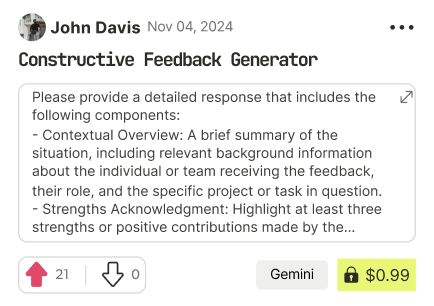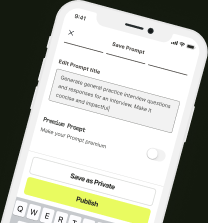Psychological Deconstruction of Independent Persona
Initial Observations:
The individual presents as intensely independent, avoids seeking help, and takes pride in being strong for others. They express resentment at a lack of reciprocity and exhibit fear of intimacy, leading to self-sabotaging relationship patterns. Childhood experiences of unpredictability with an alcoholic, explosive father and overwhelmed mother are significant context. They report feeling exhausted and disconnected from their authentic self.
PERSONALITY DECONSTRUCTION MAP
ADAPTIVE ARMOR (Trauma-Based Mechanisms):
- Intense Independence & Avoidance of Help:
- Protective Function: Prevents vulnerability and potential disappointment or rejection. In an unpredictable environment, relying on oneself becomes a safer strategy than trusting unreliable caregivers. Asking for help could have been met with dismissal, anger, or neglect in the past.
- Underlying Wound/Need: Unmet needs for consistent support, reliable care, and the experience of being safely dependent. A deep-seated fear of vulnerability and a belief that needs will not be met or will be punished.
- Current Limitations: Leads to isolation, exhaustion, and prevents genuine connection and reciprocal relationships. It fosters resentment as the unmet need for support persists while the adaptive behavior blocks its fulfillment. Limits opportunities for collaborative success and shared burdens.
- 'Strong Friend' Persona & Perfect Facade:
- Protective Function: Shields vulnerability and projects an image of competence and control. Being seen as 'strong' may have been a way to gain a sense of worth or avoid further burdening already overwhelmed caregivers. Maintaining a facade prevents others from seeing the internal emptiness and fear.
- Underlying Wound/Need: Unmet need for validation and acceptance for their authentic self, including vulnerabilities. Potentially a need to feel useful or needed to gain attention or avoid being perceived as a burden in a resource-scarce emotional environment.
- Current Limitations: Creates a barrier to authentic relationships based on mutual vulnerability and support. Prevents the individual from receiving care and attention, reinforcing the feeling of being alone. Leads to emotional exhaustion from maintaining a false self and suppresses genuine emotional expression.
- Pushing People Away & Fear of Intimacy:
- Protective Function: Prevents emotional vulnerability and the potential pain of rejection or abandonment. Closeness may have been associated with unpredictability or emotional danger in the past. Finding flaws and pushing people away preemptively avoids potential hurt.
- Underlying Wound/Need: Deep-seated fear of abandonment, rejection, and emotional pain stemming from inconsistent or emotionally unsafe early attachment experiences. An unmet need for secure and predictable emotional connection.
- Current Limitations: Sabotages opportunities for fulfilling, intimate relationships and perpetuates feelings of loneliness and isolation. Reinforces a negative self-fulfilling prophecy about relationships being unsafe or unreliable.
AUTHENTIC CORE:
- Desire for Connection (Implied Resentment): The resentment at not being checked on suggests an underlying desire for care and attention, even if consciously avoided. This indicates a potential authentic need for connection and belonging.
- Capacity for Strength (Misdirected): While currently used as a defense, the individual's capacity for strength could be an authentic trait. In a healthier context, this strength could be channeled into resilience and support for themselves and others in balanced ways, rather than as a rigid shield.
HYBRID ELEMENTS:
- Pride in Independence: This is likely a hybrid element. There may be an authentic aspect of self-reliance and competence, but it's heavily amplified and distorted by the adaptive need to avoid vulnerability and dependence due to past experiences. It's a strength turned into a defense mechanism.
DORMANT POTENTIALS:
- Vulnerability: Suppressed by the adaptive armor of independence and strength. Beneath the defenses, there is likely a capacity for vulnerability and emotional depth waiting to be safely explored.
- Need for Reciprocity and Support: Currently unmet and expressed as resentment, this points to a dormant potential for healthy interdependence and mutually supportive relationships.
- Authentic Self-Expression: The individual expresses not knowing who they are beneath the defenses, suggesting a dormant authentic self that has been obscured by adaptive mechanisms.
Synthesis:
This analysis reveals a powerful pattern: adaptive independence and strength developed as responses to an unpredictable and emotionally unsafe childhood environment. While these mechanisms were likely crucial for survival and coping in that context, they now appear to be hindering authentic connection and causing emotional distress in adulthood. The 'armor' that once protected the individual is now isolating them from genuine intimacy and support, leading to exhaustion and a disconnect from their true self. The resentment highlights a deep-seated, unmet need for connection and reciprocity that is paradoxically blocked by the very defenses erected to manage past insecurities. There is a clear tension between the learned need for self-reliance and the authentic human need for connection.
Reflective Questions:
1. If you felt safe and supported, how might you express your strength differently?
2. What would it mean to you to allow yourself to be vulnerable with someone you trust? What feelings or fears come up?
3. Can you identify small steps you could take to experiment with asking for help or showing vulnerability in safe situations?
4. What aspects of your 'strong friend' persona feel most draining to maintain?
5. What might your authentic self be like if it were freed from the need for constant protection?
DISCLAIMER: This analysis is speculative and based solely on limited information provided. It is not a clinical diagnosis or a substitute for professional mental health evaluation. Trauma responses were once necessary adaptations, not weaknesses or flaws.

Psychological Defence Decoder
- gemini
- Try Prompt

Find Powerful AI Prompts
Discover, create, and customize prompts with different models, from ChatGPT to Gemini in seconds

Simple Yet Powerful
Start with an idea and use expert prompts to bring your vision to life!